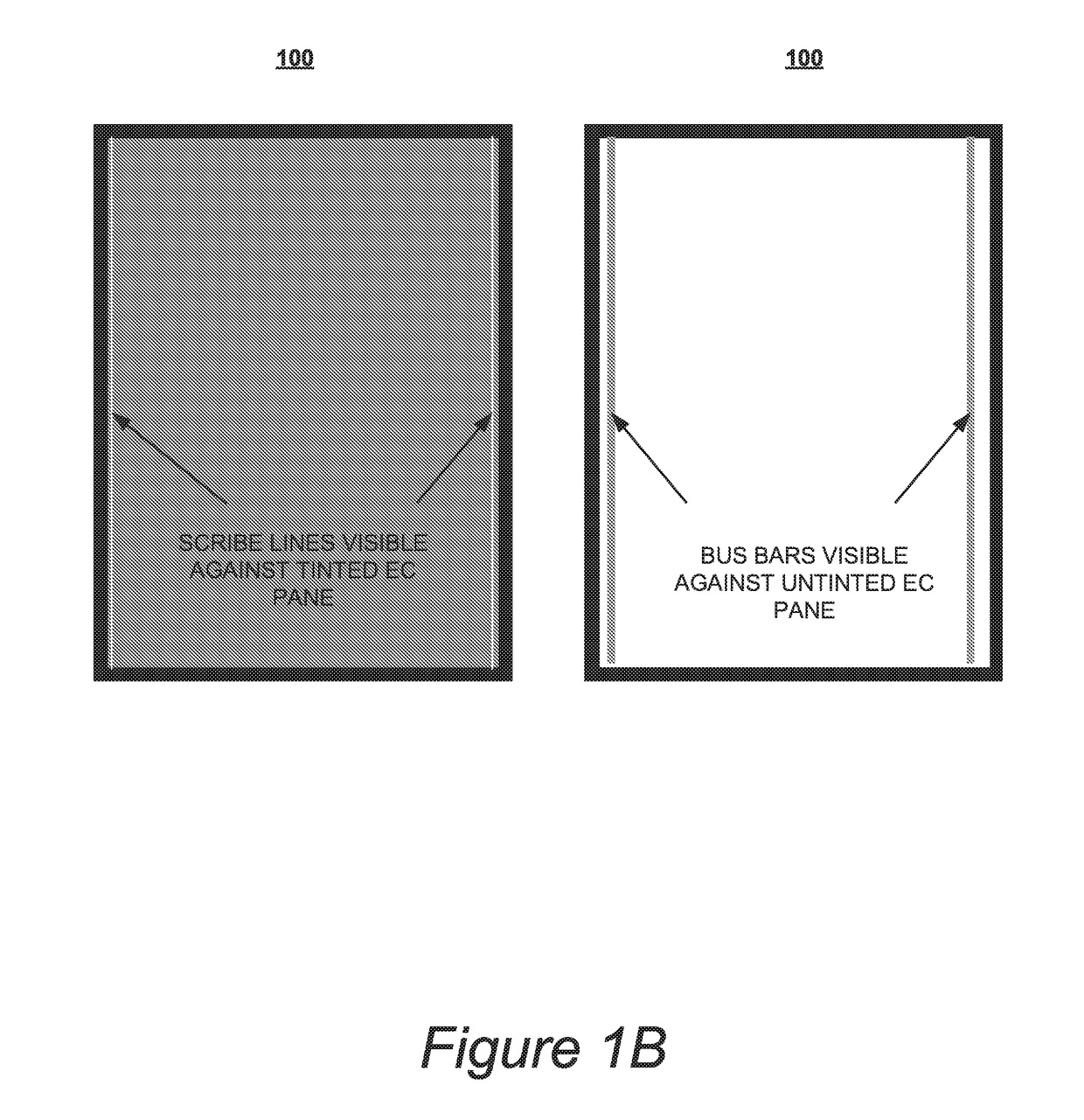Obscuring bus bars in electrochromic glass structures
a technology of electrochromic glass and bus bars, applied in the direction of door/window protective devices, instruments, constructions, etc., can solve the problems that electrochromic windows, especially electrochromic windows, still suffer various problems, and have not begun to realize their full commercial potential
- Summary
- Abstract
- Description
- Claims
- Application Information
AI Technical Summary
Benefits of technology
Problems solved by technology
Method used
Image
Examples
Embodiment Construction
[0034]In the following description, numerous specific details are set forth in order to provide a thorough understanding of the presented embodiments. The disclosed embodiments may be practiced without some or all of these specific details. In other instances, well-known process operations have not been described in detail to not unnecessarily obscure the disclosed embodiments. While the disclosed embodiments will be described in conjunction with the specific embodiments, it will be understood that it is not intended to limit the disclosed embodiments.
[0035]An electrochromic (EC) glass structure can refer to a structure including one or more EC panes (also referred to herein as EC lites) such as, for example, an insulated glass unit (IGU) or an EC pane laminated to another pane, EC or not. An example of an EC glass structure assembly is an EC window assembly having one or more IGUs. Each IGU is manufactured from two or more panes where at least one of the panes is an EC pane. Each o...
PUM
| Property | Measurement | Unit |
|---|---|---|
| width | aaaaa | aaaaa |
| thick | aaaaa | aaaaa |
| thick | aaaaa | aaaaa |
Abstract
Description
Claims
Application Information
 Login to view more
Login to view more - R&D Engineer
- R&D Manager
- IP Professional
- Industry Leading Data Capabilities
- Powerful AI technology
- Patent DNA Extraction
Browse by: Latest US Patents, China's latest patents, Technical Efficacy Thesaurus, Application Domain, Technology Topic.
© 2024 PatSnap. All rights reserved.Legal|Privacy policy|Modern Slavery Act Transparency Statement|Sitemap



